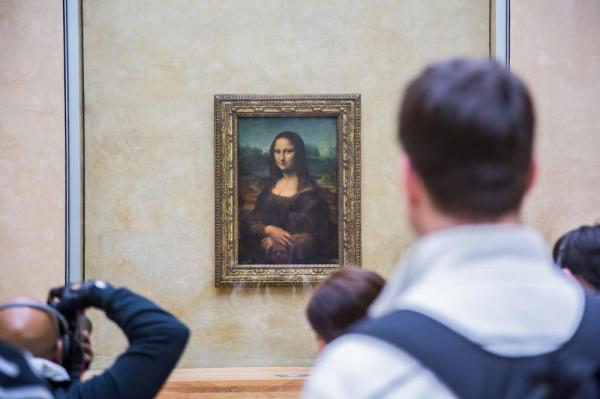
PARIS, Dec. 8 (UPI) — A French scientist who has examined the Mona Lisa for more than a decade says a reflective light analysis technique has allowed him to see beneath the painting, where he’s found other images that convince him the woman is not who art historians think she is.
Pascal Cotte was given access to the painting in 2004 and has spent more than a decade analyzing the artwork. He says a reflective light analysis called Layer Amplification Method brings out layers of paint under the surface — and those layers reveal another portrait.
“We can now analyze exactly what is happening inside the layers of the paint and we can peel like an onion all the layers of the painting. We can reconstruct all the chronology of the creation of the painting,” Cotte said.
The idea of another portrait under the Mona Lisa isn’t surprising, as many art experts have long suspected that’s the case. The notion, though, that another portrait of a different woman lies beneath the famous Mona Lisa smile “shatters many myths,” Cotte said.
According to his analysis, Cotte said the portrait underneath shows a woman he believes is Italian silk merchant Lisa del Giocondo — the woman most art historians believe is the Mona Lisa. However, Cotte says his analysis shows that the woman underneath and the woman in da Vinci’s masterpiece are two different people — which, if true, means the identity of the woman behind the famous “Mona Lisa smile” is a mystery.
“When I finished the reconstruction of Lisa [del Giocondo], I was in front of the portrait and she is totally different to Mona Lisa today. This is not the same woman,” Cotte said.
In addition to having differing physical characteristics, Cotte says part of the reason the women are different is that the lady underneath is also not smiling and she is looking to the side, not directly ahead.
“There will probably be some reluctance on the part of the authorities at the Louvre in changing the title of the painting because that’s what we’re talking about,” said art historian Andrew Graham-Dixon, who produced a BBC documentary called The Secrets of Mona Lisa based partially on Cotte’s findings.
“It’s goodbye Mona Lisa, she is somebody else.”
Other than the portrait, Cotte said he also found two additional images beneath the Mona Lisa — a shadowy outline of another portrait and a Madonna-type painting that features a pearl headdress.
Several methods of analysis have been used on Mona Lisa over the years, including infrared, but Cotte says his technique offers the best glimpse at what’s underneath.
Cotte’s claims, partially evidence-based, don’t convince everyone on the matter, though.
“[Cotte’s images] are ingenious in showing what Leonardo may have been thinking about. But the idea that there is that picture as it were hiding underneath the surface is untenable,” Martin Kemp, Emeritus Professor of the History of Art at the University of Oxford, said. “I am absolutely convinced that the Mona Lisa is Lisa.”
Art contributor Jonathan Jones, who writes for Britain’s The Guardian, also decried Cotte’s analysis.
“Who is the Mona Lisa, really? There are two answers — and French scientist Pascal Cotte has got both of them wrong,” Jones wrote. “Of course the Mona Lisa has layers. That smile? It’s not just a random whim … Cotte has forgotten that Leonardo was a genius. Of course he did not do anything so banal as paint someone else on top of his portrait of a Florentine woman.”
“It’s fascinating stuff … but Cotte has leapt to a totally false conclusion. He claims that Leonardo started out painting a ‘different’ woman and that the Mona Lisa we see today therefore does not portray Lisa Gherardini, the wife of a Florentine merchant, at all,” he added.
The Louvre museum, which houses the Mona Lisa in Paris and granted Cotte access to the painting, declined to comment on the scientist’s claims.





